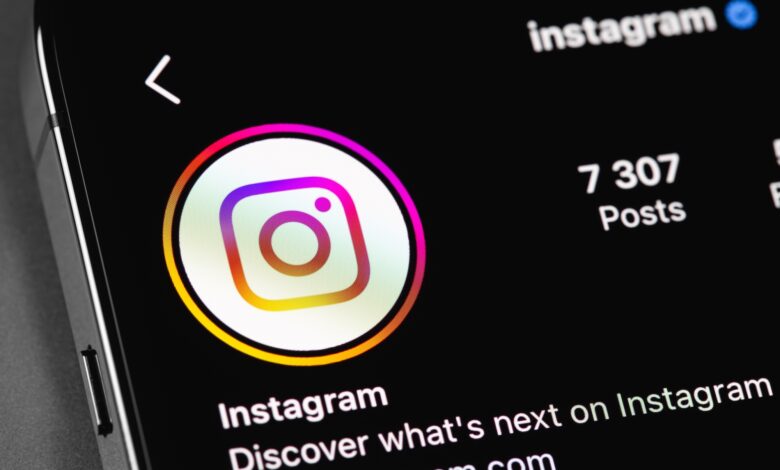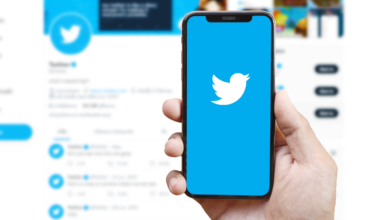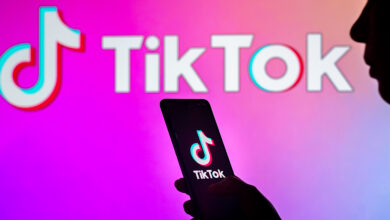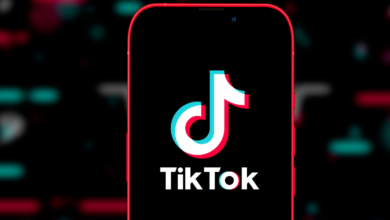Instagram Marketing: An In-Depth Guide

Does your brand have a presence on Instagram? it should.
The social networking site has more than 2 billion monthly users.
That’s a billion, with a “b”. And 90% of those people are following at least one business on the app.
With this in mind, it should come as no surprise that Instagram describes itself as the “#1 media platform for building brand relationships.”
Instagram is a powerful social media channel with great marketing potential to grow an audience and reach your customers.
So, if you don’t have an account for your business, go ahead and create one now. We’ll wait.
Once you have your business Instagram account ready to go, it’s time to start using it to elevate your brand.
In this guide, we’ll look at how Instagram marketing works, why it works, and walk you through a strategy that can help you start getting new followers and selling more on Instagram.
How effective is Instagram for marketing?
More than just a platform for sharing photos and videos with your social circle, the visual format of Instagram makes it an important part of any e-commerce strategy.
Whether you use organic content, paid ads, or a hybrid strategy, Instagram is a great way to build a visual presence and showcase your offerings.
Even better, as a platform, it generates More user engagement from Facebook and Twitter.
In reality, more than 47% of US social users ages 16-34 have purchased products or services on Instagram.
Even without a calculator, it’s easy to get a sense that millions of people are buying things on this social media platform alone. And you need to claim your share.
This is all well and good, you might say, but how do I do it?
First, you need to understand how this Meta-owned platform works.
Types of Instagram Marketing Content
Let’s start by looking at the different types of content marketing you can use.
There are four main types you may choose to employ, either individually or in combination with each other: organic marketing, paid content, influencer marketing, and affiliate marketing.
organic content
There are several different types of organic content you can use on Instagram: photos or stills, videos, stories, and reels.
The first part can be easily understood, but what is the difference between videos, stories and video reels?
Isn’t it all video content? Yes, they are, but they are all used in different ways.
Videos are shared on your profile and appear in the feeds of people who follow you. It can be up to 60 minutes for some accounts.
Instagram stories are short clips that also appear on your profile. They appear in your followers’ feeds as small circles at the top. These clips, which disappear after 24 hours, can be up to 60 seconds long.
Instagram Reels, on the other hand, is Meta’s answer to TikTok. Used on both Facebook and Instagram, these are 90-second videos that can be easily enhanced with music, text, and visual effects.
Additionally, you can choose to go live with the aptly named Instagram Live. For marketing, this allows you to personally connect with your audience, project your personality, and answer followers’ questions.
Paid content
You can also pay to put your content in front of Instagram users in their feed, in their Stories, or within the Explore tab.
Paid content is similar to regular posts, with one exception: it has a “sponsored” label. They can also contain features such as buttons, links, and catalogs, which are not available in regular content.
There are a number of formats you can choose from, including photos, videos, reels, collections, and exploration, which allows you to use the best type for your specific goals.
You can boost regular posts to display to a targeted audience, for a set duration, as well as create and run full campaigns.
Like most paid digital ads, the pricing of these paid ads varies based on targeting, competition, and scheduling.
influencer marketing
Social media has given rise to a new type of celebrity: those who are famous for being famous. In other words, influencers.
With loyal followers in the thousands or even millions, these individuals provide a huge opportunity for companies looking for a way to authentically market their products or services.
Influencer marketing, otherwise known as paid posts, usually involves some type of compensation from the brand to the influencer, for a feature on their profile, posts, story or reels.
Instagram store
Instagram allows you to integrate your product catalog with your profile, allowing you to sell directly to customers via your posts, reels, etc.
The Shop tab can be found at the top of your profile, below the bio information, which when clicked, will direct visitors to your shop on the platform.
You can also tag your Shop products in posts the same way you would tag another user.
How to build an Instagram marketing strategy
As a marketer, you know the futility of trying to capture an audience without a strategy.
To get the most out of your Instagram marketing, you need to have a well-thought-out plan.
Build your strategy using the following steps:
1. Define your goals
What do you hope to achieve on this platform? Do you want to increase brand awareness? Are you looking to make sales? Maybe you want to show your product line? Or display User Generated Content (UGC)?
There is no wrong answer and you can have multiple goals, but what you are trying to achieve will change how you measure your performance.
2. Define your audience
Instagram allows demographic targeting, so you can be very specific about who you want to target. Take things like age, gender, location, income, and interests into consideration when deciding who to target.
If you’re not quite sure who you should target, see who handles popular posts and hashtags related to your industry.
Then, take a look at their profiles to get an insight into their demographics and the things they are interested in.
3. Check out the competition
One of the best sources of information about what works and what doesn’t work on Instagram can be your competitors.
Conduct a comprehensive competitive analysis that includes:
- Identify superior and secondary competitors.
- Gather information about their followers and the types of posts they make.
- Analyze their activity to determine what type of posts get the most engagement.
4. Create a content calendar
By this point, you should have a pretty good idea of what kind of Instagram content you want to create. This means that it is time to develop an implementation strategy.
Build your editorial calendar using as many details as possible.
It will save you a lot of time on the road if you clearly specify the date and time you want the content to be released, the type of post (still images, reels, live, etc.), the hashtags you will use, and the comments that will accompany them.
Experiment to find the best times to post on Instagram.
This is also a good place to record important holidays and events in your industry, or to highlight sales or new product releases.
5. Make your own content
Well, you’ve defined your goals, identified your audience, vetted your competitors’ Instagram strategy, and created a comprehensive content strategy.
There is only one thing left to do before you start publishing: create the content.
Remember that everything you post on Instagram, or any social media site, is a reflection of your business. As such, you need to ensure that it aligns perfectly with your brand’s personality.
Make sure you consider color schemes, the type of language you’re using, and the specific needs of your audience.
Make sure each post has a goal it’s trying to achieve and includes calls to action (CTAs) where possible.
Instagram post types
Not sure what type of posts you should be making?
The beauty of Instagram is that it allows you to be as creative as you want.
For your inspiration, here are some of the most popular things companies post:
- Pictures and videos of products and services.
- Trending topics (aka news hijack) to help build brand relevance.
- User-generated content (reposts, reviews, etc.).
- Behind-the-scenes footage that shares things that audiences wouldn’t normally see.
- Inspirational posts to boost brand reputation and engagement.
- Educational information (recipes, how-tos, etc.).
- Contests to generate excitement, shares and statements.
Instagram marketing best practices
Hopefully, you now have at least a basic understanding of how to use Instagram marketing to promote your brand.
Offering incredible flexibility, this social media platform allows you to experiment with new approaches and ideas to find what works best for your specific situation.
However, here are some best practices you can use to maximize your impact:
- Improve your profile Find a great picture for your profile picture, take some time to write your bio, and be sure to include your CTA.
- Tell visual stories People love to narrate, even in a single post. Make sure your content is captivating and tells your brand’s story.
- Post when your audience is active This may take some experimentation, but there is generally a best time to post in each area.
- Use the correct tags Your posts should always include relevant hashtags to make them more discoverable. Use niche or industry hashtags instead of generic tags when possible.
- Interact with your followers – Don’t skimp on likes in comments, and look for opportunities to respond to your followers.
- Stick to your schedule Like any other marketing campaign, your Instagram campaign should have a steady flow. Motivating posts can be fun, but they should be the exception in your strategy.
Make Instagram work for you
Instagram is a great platform for building a relationship with your targets, educating customers about your brand, and expanding your audience.
And because it provides clear metrics, you can quickly see what’s working and what’s not.
What works for one company isn’t guaranteed to work for another, especially as Instagram continues to evolve. But that is the beauty of it.
Don’t be afraid to experiment.
Just make sure that you always keep your goals and objectives in mind and you will be an Instagram star in no time.
More resources:
- 22 ways to get more Instagram followers right now
- How to Use Hashtags on Instagram: Everything You Need to Know
- How to sell on Instagram: 11 social commerce tips and examples
Featured image: Christian Dina/Shutterstock




